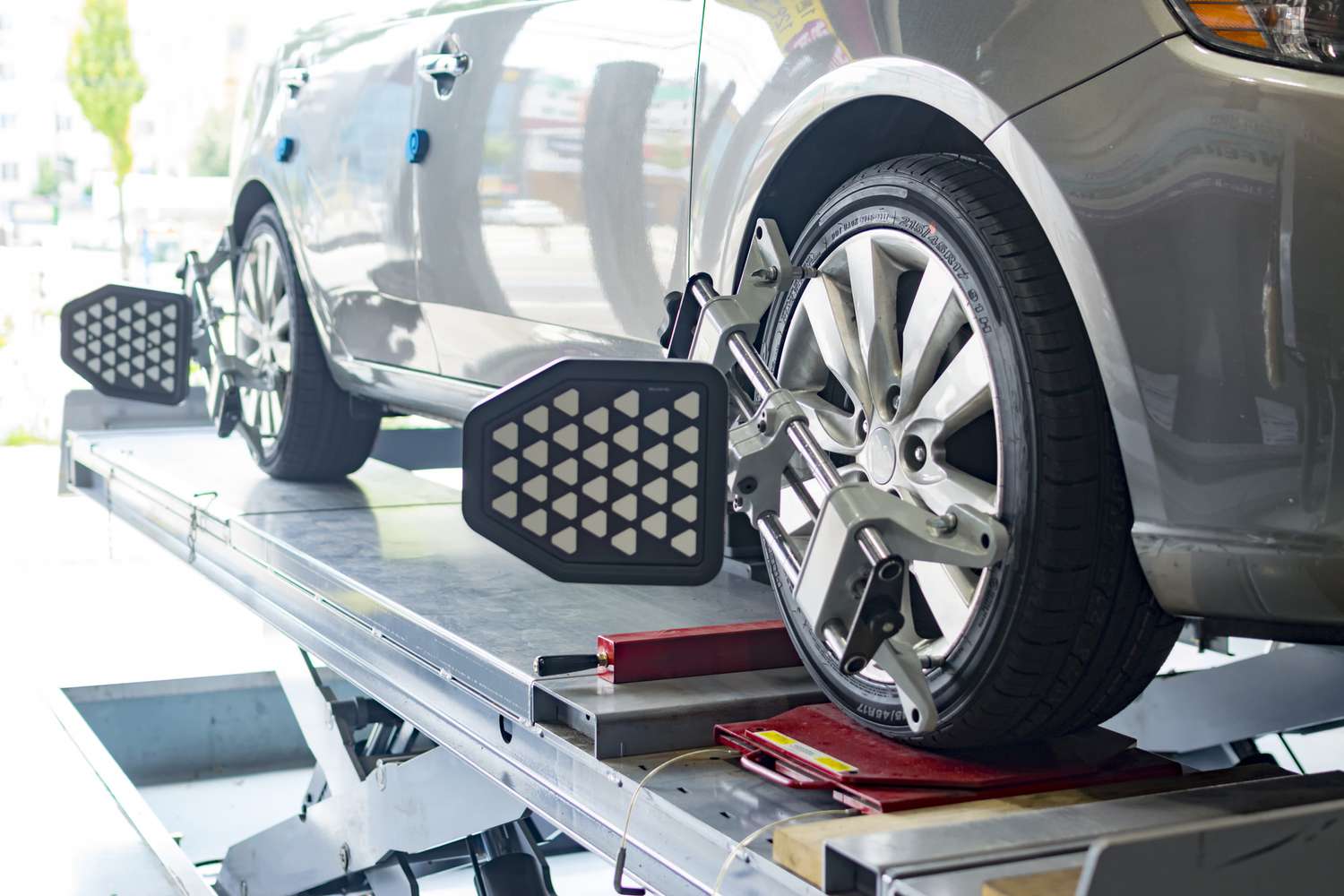Your vehicle’s wheel alignment is an important factor in its performance on the road. Misalignment can lead to poor handling and, worse, damage to the wheels or other parts. But what are the three possibilities when it comes to wheel alignment? Read on for a comprehensive guide to understanding all three types of wheel alignment.
Introduction to Wheel Alignment
Most people don’t know what wheel alignment is. And, when they take their car in for service, they may not even think to ask.
Wheel alignment is the adjustment of your car’s suspension. This keeps your tires pointing in the right direction while driving down the road.
Why is wheel alignment important? Properly aligned wheels can save you money on fuel and tires. They also improve safety by helping your car handle better on the road.
There are three types of wheel alignment: toe, caster, and camber. Read on to learn more about each type of wheel alignment and how it affects your car’s performance.
What Are The Three Types Of Wheel Alignment?
As a car owner, you may have heard of wheel alignment, but do you know what it is? Wheel alignment is the adjustment of your vehicle’s suspension. This is what keeps your wheels pointing in the correct direction while driving. Keeping your wheel alignment in check is important because it can affect how your car drives and handles.
If your wheel alignment is off, it can cause your car to pull to one side or the other, which can be dangerous. There are three types of wheel alignment: toe, camber, and caster. Let’s take a closer look at each one so you can better understand what they are and how they work. People also read the following are some of the useful auto parts one may find in a junkyard. Toe refers to the angle at which your tires point in relation to each other and the centerline of your car.
If your tires are pointing inward, that’s called toe-in. If they’re pointing outward, that’s called toe-out. Toe-in or toe-out can be caused by several things, such as worn-out shock absorbers or springs, an incorrect wheelbase setting, or even just hitting a big pothole.
Camber is the angle at which your tire sits in relation to the ground when viewed from the front or back of the car. If the top of your tire is leaning outward (away from the car), that’s called positive camber. If it’s leaning inward (
Front Wheel Alignment
Regular wheel alignment is critical to maintaining the health of your vehicle. You’ll experience improved handling and fuel economy when your wheels are properly aligned. You’ll also extend the life of your tires.
There are three main types of wheel alignment: toe, caster, and camber. This article will explain each type of alignment and how it affects your vehicle. We’ll also show you how to tell if your car needs an alignment.
Toe alignment is the most common type of wheel alignment. Toe refers to the angle at which your wheels point in relation to the centerline of your vehicle. Incorrect toe alignment can cause your tires to wear unevenly, leading to poor handling and decreased fuel economy.
Caster alignment adjusts the angle of your steering axis in relation to the vertical centerline of your vehicle. This type of alignment is less common than toe or camber adjustments, but it’s still important for proper handling.
Camber alignment adjusts the angle of your wheels in relation to the vertical centerline of your vehicle. Incorrect camber alignment can cause tire wear and poor handling. Camber adjustments are often made in conjunction with toe or caster adjustments.
Rear Wheel Alignment
Rear wheel alignment is critical to ensuring your car drives straight and true. There are three main types of rear wheel alignment: toe, camber, and caster. Each type of alignment adjusts a different aspect of the rear wheels, so it’s important to know which one you need.
Toe alignment is the most basic type of alignment and simply involves adjusting the angle of the rear wheels so that they point straight ahead. This is the easiest type of alignment to do yourself, but it’s also the most likely to get out of adjustment over time.
Camber alignment adjusts the vertical angle of the rear wheels. This is a more complex adjustment that should be done by a professional, as it requires special tools and knowledge. However, it’s essential to ensure your car’s tires wear evenly and don’t create unnecessary drag while driving.
Caster alignment is the final type of rear wheel alignment and adjusts the forward-backwards tilt of the rear wheels. Like camber alignment, this is a complex adjustment that should only be done by a professional. Caster alignment ensures your car tracks straight and doesn’t pull to one side while driving.
Toe Alignment
Most people are unaware that there are three types of wheel alignment: toe, caster, and camber. Toe alignment is the most common type of alignment, and it is what most people think of when they hear the term “wheel alignment.” Toe alignment means that the front and rear wheels point in the same direction. This is important because it ensures that your vehicle will track straight and not pull to one side or the other.
Caster refers to the angle of the steering axis, affecting how easy it is to steer your vehicle. If the caster is too high, your vehicle will be difficult to turn; if it’s too low, your car will want to wander. Camber refers to the angle of the wheel in relation to the ground. If the camber is too positive (the top of the wheel is tilted out), you’ll experience excessive tire wear on the outside edge of the tire; if it’s too negative (the top of the wheel is tilted in), you’ll experience excessive tire wear on the inside edge of the tire.
Benefits of Good Alignment
One of the benefits of good alignment is that it can help improve your vehicle’s gas mileage. When your tires are properly aligned, they can roll more efficiently, so your engine doesn’t have to work as hard to move the vehicle down the road. This can lead to better fuel economy and fewer trips to the gas station.
Another benefit of proper alignment is that it can help extend the life of your tires. When your tires are properly aligned, they experience less wear and tear. This means that you won’t have to replace them as often, which can save you money in the long run.
Finally, good alignment can improve your driving experience by improving your car’s handle. Properly aligned tires will grip the road better, making driving in hazardous conditions easier and safer.
How To Check For Proper Wheel Alignment
It is important to check your wheel alignment regularly to ensure the safety of your vehicle. There are three types of wheel alignment: toe, camber, and caster. The toe is the angle at which your wheels point in relation to the centerline of your vehicle. Camber is the angle of your wheel in relation to the ground. The caster is the angle of your wheel’s steering axis in relation to the ground. All three angles must be within specifications for your vehicle to handle properly.
If any of these angles are out of specification, it can cause several problems. For example, if your toe is out of specification, it can cause your vehicle to veer off course. If your camber is out of specification, it can cause premature tire wear. And if your caster is out of specification, it can be difficult to steer your vehicle. That’s why it’s important to have all three angles checked regularly by a qualified technician using the proper equipment.
Tips On Finding The Right Mechanic
If you’re having trouble with your car’s alignment, it’s important to find a good mechanic to help you fix the problem. Here are a few tips on finding the right mechanic:
1. Look for someone who has experience working on alignment problems. A good way to find out if a mechanic has experience with alignment is to ask them about the alignment problems they’ve worked on.
2. Ask around for recommendations. Talk to friends, family, or co-workers who have had their alignment fixed in the past and see if they have any recommendations for a good mechanic.
3. Check online reviews. Another good way to find a reputable mechanic is to check online reviews. See what other people have said about their experiences with different mechanics in your area.
4. Once you’ve found a few mechanics that you think might be able to help, give them a call and ask some questions about their services and prices. This will help you narrow your choices and find the right mechanic for your needs.
Conclusion
We hope this article has helped clarify the wheel alignment concept for you. We have outlined all three types—toe, thrust and caster—as well as their individual benefits and disadvantages. Now that you have a better understanding of wheel alignment, you can be sure to choose the right type for your car or truck to get optimal performance from it. Remember always to shop around for reputable companies that specialize in wheel alignment and enjoy greater driving comfort after having them set up correctly!










